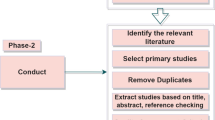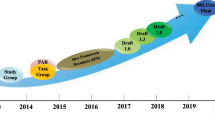Abstract
In this era of telecommunication, quality of service (QoS) is the prime metric for defining the performance of wireless networks. However, QoS is highly affected by the levels of signal strength. Variations in signal strength lead to several undesirable consequences, increasing wireless device's power consumption, especially during handover. In the perspective of Green Networking, to devise energy-efficient handover techniques, this paper compares the power consumption of wireless nodes under different states of affairs, leading to variations in signal strength. A vertical handover scenario between Wi-Fi and WiMAX networks was carried out to analyze the power consumption of two different sets of nodes, namely Type-I and Type-II nodes. Five different scenarios leading to signal strength fluctuations during handover were considered during the study. The initial energy levels of nodes were calculated at three different voltage levels, namely charge voltage, nominal voltage and cut-off voltage. The results explained the individual battery drainage pattern of wireless nodes with variations in signal strength under different scenarios and evaluated the cumulative power consumption of wireless nodes with variable signal strength at three voltage levels. Network performance was analyzed based on residual energy of nodes, throughput and packet delivery ratio. The cumulative analysis of power consumption presented in this paper can provide a prominent proposal of the battery drainage pattern of wireless nodes for various scenarios leading to variable signal strength, which can serve as a roadmap for devising energy-efficient mechanisms during handover in new generation ubiquitous networks.



















Similar content being viewed by others
Data Availability
Enquiries about data availability should be directed to the authors.
References
Barolli, L., Xhafa, F., Durresi, A., Koyama, A. (2008). A fuzzy-based handover system for avoiding ping-pong effect in wireless cellular networks. In 2008 International conference on parallel processing-workshops, pp. 135–142.
Edwards, G., Kandel, A., & Sankar, R. (2000). Fuzzy handoff algorithms for wireless communication. Fuzzy Sets and Systems, 110(3), 379–388.
Gupta, V., Bonde, P. (2018). Handover techniques in new generation wireless networks. In Smart Computing and Informatics, pp. 127–138.
Bensky, A. (2019). Short-range wireless communication In Book: Short-range Wireless Communication, pp.163–198.
Singh, V., & Gill, S. S. (2014). Signal strength estimation of wireless communication system. International Journal of Advanced Research in Computer Engineering & Technology (IJARCET), 3(8), 2612–2617.
Yamamoto, B., Wong, A., Agcanas, P. J., Jones, K., Gaspar, D., Andrade, R., & Trimble, A. Z. (2019). Received signal strength indication (RSSI) of 2.4 GHz and 5 GHz wireless local area network systems projected over land and sea for near-shore maritime robot operations. Journal of Marine Science and Engineering, 7(9), 290.
Ngala, D.K., Akanbasiam J.A., Yiadom, K.K. (2018). Received signal Strength variation for a typical suburban environment. In IEEE 7th International Conference on Adaptive Science & Technology (ICAST), pp. 1–7.
Garg,V. (2007). Radio propagation and propagation path-loss models. In Book Wireless communications & networking, a volume in the morgan kaufmann series in networking, pp. 47–84.
Bonde, P. (2020). Evaluation of power consumption for mobile environment in new generation wireless networks. Solid State Technology, 63(5), 3841–3851.
Gupta, V., Padma, B. (2018). Energy-efficient mechanisms for next-generation green networks. In Recent Findings in Intelligent Computing Techniques, pp. 415–423.
Baroudi, U., Qureshi, A., & Mekid, S. (2015). Characterization and modeling of received signal strength and charging time for wireless energy transfer. Advances in Electrical Engineering, 2015(1), 1–15.
Ding, N., Wagner, D., Chen, X., Pathak, A., Hu, Y. C., & Rice, A. (2013). Characterizing and modeling the impact of wireless signal strength on smartphone battery drain. ACM SIGMETRICS Performance Evaluation Review, 41(1), 29–40.
Kakar, J., & Sezgin, A. (2017). A survey on robust interference management in wireless networks. Entropy, 19(7), 362.
Zhao, G., Wang Q., Xu, C., Yu, S. (2018). Analyzing and modelling the interference impact on energy efficiency of WLANs. In IEEE international conference on communications (ICC), pp. 1–6.
Bhattacharjee, S., & Bandyopadhyay, S. (2012). An interference aware minimum energy routing protocol for wireless networks considering transmission and reception power of nodes. Procedia Technology, 4(1), 1–8.
Kiruthika, V., & Vembu, S. (2020). Dynamic handover algorithm with interference cancellation in 5g networks for emergency communication. International Journal of Communication Systems, 33(4), 4227.
Andjamba, T.S., Zodi, G.A.L., Jat, DS. (2016). Interference analysis of IEEE 802.11 wireless networks: A case study of namibia university of science and technology. In International Conference on ICT in Business Industry & Government (ICTBIG), pp. 1–5.
Yun, J.-H. (2019). Handover-driven interference management for co-channel deployment of femto-and macro-cells. Applied Sciences, 9(17), 3463.
López-Pérez, D., Valcarce, A., Ladányi, Á., de la Roche, G., & Zhang, J. (2010). Intracell handover for interference and handover mitigation in OFDMA two-tier macrocell-femtocell networks. EURASIP Journal on Wireless Communications and Networking, 1, 1–15.
Chellani, G., & Kalla, A. (2013). A review: study of handover performance in mobile IP. International Journal of Computer Networks & Communications (IJCNC), 9(6), 1–10.
Ashraf, A. (2019). A review on mobile internet protocol (Mobile IP). International Journal for Scientific Research & Development, 7(05), 2321–0613.
Mojamed, M. A. (2020). Integrating IP mobility management protocols and MANET: a survey. Future Internet, 12(9), 1–11.
Funding
Funding information is not applicable/No funding was received.
Author information
Authors and Affiliations
Corresponding author
Ethics declarations
Conflict of interest
Vinodini Gupta is a Research Scholar at Department of Computer Science and Engineering, Shri Shankaracharya Technical Campus, Bhilai, Chhattisgarh, India. Vinodini Gupta states that she has no conflict of interest. Padma Bonde is working as an Associate professor at Department of Computer Science and Engineering, Shri Shankaracharya Technical Campus, Bhilai, Chhattisgarh, India. Padma Bonde states that she has no conflict of interest. Dr. Rohit Raja is presently working as an Associate professor at Central University, Chhattisgarh, India. Dr. Rohit Raja declares that he has no conflict of interest. Dr. Sandeep Kumar is currently working as a Dean R&D and Professor in ECE department of Sreyas Institute of Engineering and Technology, Hyderabad, India. Dr. Sandeep Kumar declares that he has no conflict of interest.
Ethical approval
All procedures performed in studies involving human participants followed the institutional or national research committee's ethical standards.
Additional information
Publisher's Note
Springer Nature remains neutral with regard to jurisdictional claims in published maps and institutional affiliations.
Rights and permissions
Springer Nature or its licensor (e.g. a society or other partner) holds exclusive rights to this article under a publishing agreement with the author(s) or other rightsholder(s); author self-archiving of the accepted manuscript version of this article is solely governed by the terms of such publishing agreement and applicable law.
About this article
Cite this article
Gupta, V., Bonde, P., Raja, R. et al. Comparison of Cumulative Power Consumption with Signal Strength Variations in New Generation Wireless Networks. Wireless Pers Commun 129, 1025–1048 (2023). https://doi.org/10.1007/s11277-023-10171-3
Accepted:
Published:
Issue Date:
DOI: https://doi.org/10.1007/s11277-023-10171-3




